Mercedes EQS VS Nissan Interstar – Specs, Efficiency & Price Comparison
Which model is the better choice – the Mercedes EQS or the Nissan Interstar? We compare performance (761 HP vs 180 HP), boot capacity (610 L vs ), efficiency (16.50 kWh vs 7.40 L), and of course, the price (93900 £ vs 33300 £).
Find out now which car fits your needs better!
The Mercedes EQS (Hatchback) is powered by a Electric engine and comes with a Automatic transmission. In comparison, the Nissan Interstar (Cargo Van) features a Diesel or Electric engine and a Manuel or Automatic gearbox.
When it comes to boot capacity, the Mercedes EQS offers 610 L, while the Nissan Interstar provides – depending on what matters most to you. If you’re looking for more power, you’ll need to decide whether the 761 HP of the Mercedes EQS or the 180 HP of the Nissan Interstar suits your needs better.
There are also differences in efficiency: 16.50 kWh vs 7.40 L. In terms of price, the Mercedes EQS starts at 93900 £, while the Nissan Interstar is available from 33300 £.
Compare all the key specs now and find out which model fits your lifestyle best!
Mercedes EQS
The Mercedes-Benz EQS redefines luxury in the realm of electric vehicles, combining exceptional comfort with cutting-edge technology. Its sleek and aerodynamic design is a testament to both elegance and efficiency, setting new standards for the brand. Inside, the EQS offers a serene and spacious cabin equipped with the latest advancements, ensuring a refined driving experience.
details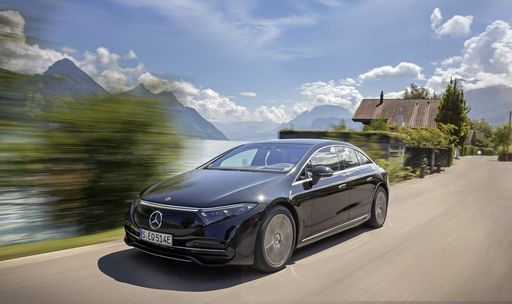 @ group-media.mercedes-benz.com
@ group-media.mercedes-benz.com
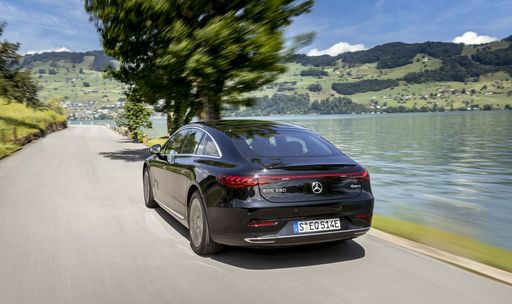 @ group-media.mercedes-benz.com
@ group-media.mercedes-benz.com
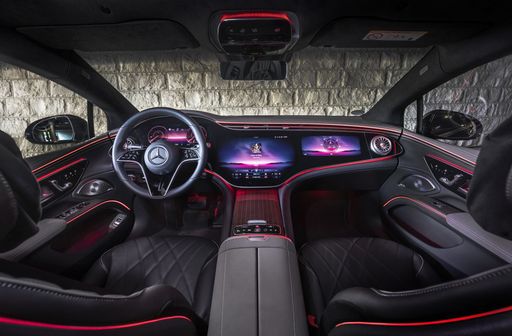 @ group-media.mercedes-benz.com
@ group-media.mercedes-benz.com
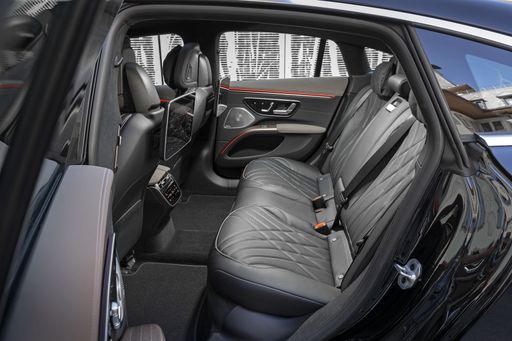 @ group-media.mercedes-benz.com
@ group-media.mercedes-benz.com
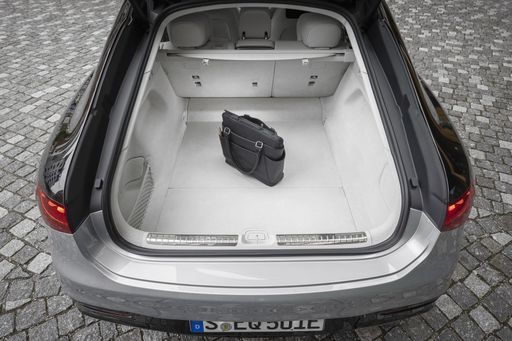 @ group-media.mercedes-benz.com
@ group-media.mercedes-benz.com
Nissan Interstar
The Nissan Interstar is a versatile van that expertly combines practicality with modern design. It offers a spacious interior that caters to both cargo and passenger needs, making it ideal for businesses and families alike. With its robust performance and efficient fuel consumption, the Interstar stands out as a reliable choice in the commercial vehicle market.
details

|
|
|
|
|
Costs and Consumption |
|
|---|---|
|
Price
93900 - 136900 £
|
Price
33300 - 55600 £
|
|
Consumption L/100km
-
|
Consumption L/100km
7.4 - 7.5 L
|
|
Consumption kWh/100km
16.5 - 21 kWh
|
Consumption kWh/100km
-
|
|
Electric Range
625 - 816 km
|
Electric Range
175 - 410 km
|
|
Battery Capacity
118 kWh
|
Battery Capacity
-
|
|
co2
0 g/km
|
co2
0 - 195 g/km
|
|
Fuel tank capacity
-
|
Fuel tank capacity
80 - 105 L
|
Dimensions and Body |
|
|---|---|
|
Body Type
Hatchback
|
Body Type
Cargo Van
|
|
Seats
5
|
Seats
3 - 7
|
|
Doors
5
|
Doors
4
|
|
Curb weight
2545 - 2715 kg
|
Curb weight
1927 - 2538 kg
|
|
Trunk capacity
610 L
|
Trunk capacity
-
|
|
Length
5223 mm
|
Length
5048 - 6848 mm
|
|
Width
1926 mm
|
Width
2070 - 2080 mm
|
|
Height
1512 - 1520 mm
|
Height
2307 - 2808 mm
|
|
Payload
510 - 565 kg
|
Payload
845 - 1451 kg
|
Engine and Performance |
|
|---|---|
|
Engine Type
Electric
|
Engine Type
Diesel, Electric
|
|
Transmission
Automatic
|
Transmission
Manuel, Automatic
|
|
Transmission Detail
Reduction Gearbox
|
Transmission Detail
Schaltgetriebe, Manual Gearbox, Automatikgetriebe, Automated Manual
|
|
Drive Type
All-Wheel Drive, Rear-Wheel Drive
|
Drive Type
Front-Wheel Drive, Rear-Wheel Drive
|
|
Power HP
360 - 761 HP
|
Power HP
105 - 180 HP
|
|
Acceleration 0-100km/h
3.4 - 6.2 s
|
Acceleration 0-100km/h
-
|
|
Max Speed
210 - 250 km/h
|
Max Speed
115 - 177 km/h
|
|
Torque
568 - 1020 Nm
|
Torque
300 - 400 Nm
|
|
Number of Cylinders
-
|
Number of Cylinders
4
|
|
Power kW
265 - 560 kW
|
Power kW
77 - 132 kW
|
|
Engine capacity
-
|
Engine capacity
1997 - 2299 cm3
|
General |
|
|---|---|
|
Model Year
2024
|
Model Year
2021 - 2025
|
|
CO2 Efficiency Class
A
|
CO2 Efficiency Class
G, A
|
|
Brand
Mercedes-Benz
|
Brand
Nissan
|
Mercedes EQS
Revolutionising Electric Mobility: The Mercedes-Benz EQS
The automobile industry is undergoing a remarkable transformation, and at the forefront of this evolution is the Mercedes-Benz EQS. As a flagship model of the German marque's electric lineup, the EQS represents the pinnacle of luxury and innovation in the sphere of electric vehicles (EVs). With its sleek silhouette, unparalleled technology, and sustainable power, the EQS promises to set new standards for luxury electric driving.
Elegant Design Meets Intelligent Engineering
The Mercedes-Benz EQS is designed with an aesthetic that reflects both futuristic vision and traditional elegance. Its elongated body, measuring 5,223 mm in length, conveys a powerful presence on the road while ensuring optimal aerodynamics. The front fascia, with its innovative LED lighting design, provides a distinctive visual signature whether the car is in motion or stationary.
Additionally, the EQS features a spacious boot with a capacity of 610 litres, ensuring practicality is not sacrificed for style. Attention to detail is evident everywhere, from the 1,926 mm wide stance that provides stability and poise to the exquisite interior craftsmanship that creates an atmosphere of refined luxury.
A Masterclass in Performance and Efficiency
Underneath its elegant exterior, the Mercedes-Benz EQS houses some of the most advanced technological innovations. It boasts an electric powertrain with a range of power outputs from 360 PS to an impressive 761 PS, thanks to its sophisticated dual-motor setup. With a maximum speed ranging between 210 and 250 km/h, the EQS ensures that electric mobility does not compromise on performance.
Efficiency is also a key player with the EQS. The model achieves an impressive energy consumption rate starting from 16.5 kWh per 100 km, empowering drivers with an electric range extending up to 816 km on a single charge. This is made possible by the vehicle’s substantial 118 kWh battery capacity, paired with advanced energy recuperation systems.
Setting New Standards for Technological Innovation
The EQS is not just about what's under the bonnet; it’s also about the cutting-edge technology that enhances every driving experience. The revolutionary MBUX Hyperscreen is a standout feature, extending across the dashboard with a seamless blend of screens, providing unparalleled interactive experiences and information at the driver's fingertips.
Safety and driver assistance are paramount, with features such as the latest generation of driving aids, ensuring both safety and convenience. The EQS is equipped with numerous sensors and AI-driven systems that effortlessly adapt to road conditions and driver behaviour, providing support and confidence in every journey.
Environmental Commitment and Cost Efficiency
With zero CO2 emissions on the road, the EQS is emblematic of Mercedes-Benz’s commitment to sustainable and environmentally friendly mobility. Furthermore, the cost-effectiveness of operating an EQS is another attractive feature, with ownership costs ranging from €2,117 to €2,827 per month, depending on the driving style and specific configuration. The EQS is not only setting a benchmark in luxury and innovation but also paving the way for a greener future.
Conclusion: The Future is Electric
The Mercedes-Benz EQS stands as a testament to the future of the automotive industry. It combines sustainability with luxurious comfort, cutting-edge technology with outstanding performance. For those seeking to make a statement and lead the charge towards an electrified motoring future, the EQS offers an unparalleled experience that is as innovative as it is inspiring.
Nissan Interstar
The Evolution of the Nissan Interstar
The Nissan Interstar has long been a staple in the commercial vehicle sector, known for its robust build and practical design. The latest iterations have further cemented its status with a range of technical enhancements and innovative features aimed at aiding businesses in achieving optimal efficiency. Whether you're navigating city streets or traversing the highways, the Interstar stands out as a reliable workhorse ready to meet various transport needs.
Power and Performance
The current range of Nissan Interstar models boasts diesel engines ranging from 105 to 180 PS, offering a commendable blend of power and fuel efficiency across the board. With a fuel consumption of between 7.4 and 7.5 litres per 100 kilometres, these vehicles are designed to minimise operational costs while maximizing performance.
All models feature four-cylinder engines, with engine displacement between 1997 and 2299 cm³, capable of producing torque figures between 330 and 400 Nm. These specifications ensure that the Interstar offers superior pulling power, which is particularly useful for transporting heavy loads across different terrains.
Transmission and Drive Options
Versatility is at the heart of the Nissan Interstar, with transmission options including both manual and automatic gearboxes. Drivers can also choose between front-wheel and rear-wheel drive configurations, allowing the vehicle to suit specific logistical requirements or personal preferences.
For those seeking simplicity and ease of use in urban environments, the Interstar with its automated gearshift provides a smooth driving experience, reducing driver fatigue and increasing focus on the road ahead.
Dimensions and Load Capacities
The Nissan Interstar is available in various lengths, from 5048 mm to an extensive 6848 mm, catering to diverse commercial needs. With widths ranging from 2070 mm to 2222 mm and heights from 2307 mm to 2808 mm, the Interstar offers multiple configurations to maximise cargo space and accommodate various loads.
With a maximum payload capacity of up to 1451 kg, businesses can rest assured that the Interstar is more than capable of delivering goods efficiently without compromising on safety or comfort.
Innovation and Technological Features
While functionality remains a priority, Nissan has not skimped on technological advancements. Among the innovations included are advanced safety features, such as anti-lock braking systems (ABS), electronic stability control (ESC), and a variety of sensors to assist with parking and reversing.
In terms of driver comfort, the brand offers multiple trim levels with exceptional interior features designed to enhance driver experience during long hauls. Options such as climate control, advanced navigation systems, and modern infotainment setups are available, ensuring that both driver and passenger remain comfortable and connected, regardless of the journey length.
Coachwork and Trim Options
The Interstar line-up provides a range of trim levels and equipment lines, from the entry-level Visia to the high-spec Tekna, catering to different market demands and individual preferences. The selection allows buyers to prioritise features that best suit their operation or driving style.
For example, the N-CONNECTA variant offers an array of added extras, enhancing both connectivity and comfort for drivers who rely on the vehicle as a mobile office.
Conclusion
The Nissan Interstar represents a harmonious blend of power, efficiency, and technological innovation in the large van segment. With its vast array of options and features, the Interstar is undeniably a top choice for businesses looking to invest in a dependable and adaptable commercial vehicle. As the line-up continues to evolve, the Interstar remains poised to meet the growing challenges and demands of the modern logistic landscape.
The prices and data displayed are estimates based on German list prices and may vary by country. This information is not legally binding.
